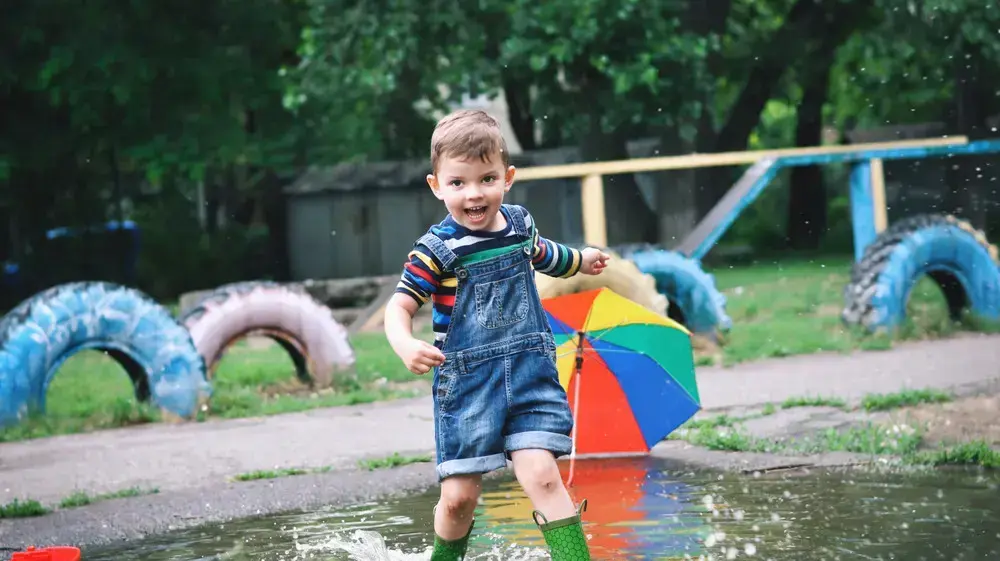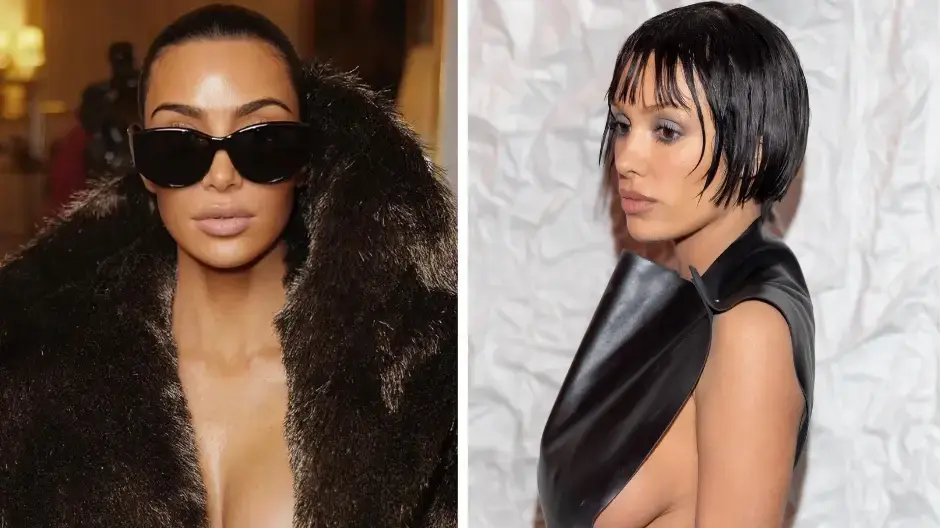How are they not cold?
A boy in short clothes jumps in a puddle (Photo: ShutterStock)
Have you ever wondered why your children are not cold when you are freezing?
Well, scientists say there's a reason adults are colder than kids, even when they're in a coat and the two are wearing shorts.
And it's not just because they're constantly moving or showing sensitivity to different items of clothing.
So what is their secret?
They have more brown fat.
These fat cells are designed to generate heat and maintain the internal temperature of 37 degrees Celsius.
Unlike the white fat, which appears mainly around the abdomen, pelvis and also the chin, the brown type is distributed invisibly and compactly deeper inside, especially around the shoulder blades, spine and kidneys.
This fat makes up close to 5 percent of a newborn's body fat, but levels gradually decrease with age—leaving adults more susceptible to colder temperatures.
What is brown fat?
There are two types of fat cells in the body - white fat and brown fat, since the brown fat cells have more pigments.
The brown fat cells burn more sugar (glucose) and fatty acids in their metabolic processes, so we lose more energy.
The white fat, as opposed to the brown fat, is the same fat that accumulates in the body - the excess fat that we notice on the hips, buttocks and stomach mainly - and from which we try to get rid of with the help of diet and exercise.
When the body is exposed to cold, from around 16C, brown fat is activated - starting its engine to create heat in a scientific process called thermogenesis.
It does this by burning extra calories, breaking down blood sugar and fat molecules found throughout the body.
Dr. Dayan Seliya, an expert in cellular and organismal metabolism based at the University of Reading, told MailOnline that this ability is all due to a unique protein in brown fat that allows brown fat to break down glucose and fat molecules to create heat. Its location - including the neck, shoulders, upper arms, spine And the stomach - shows that it overlaps with blood vessels in the body, which allows it to warm the blood, which is pumped by the heart throughout the body.
Difference in body temperature, but not only.
A winter day (photo: Reuven Castro)
Additionally, while adults rely on shivering—when muscles contract rapidly to generate heat and maintain body heat—babies don't develop this mechanism until they're six months old.
This means they rely more on brown fat to keep warm.
The levels of the aforementioned brown fat do not begin to decrease until adulthood, which may explain why young people seem less sensitive to the cold.
"Babies and small children have large amounts of brown fat," Dr. Salleh said. "This is especially necessary in the immediate postpartum period when newborns experience a sudden negative temperature gradient from the womb to the hospital ward.
Also, babies can't use shivering as protection against cold."
But not only brown fat warms us.
The more white fat adults have—the fat that accumulates when you eat more calories than you burn—the less likely they are to feel cold.
That's because even white fat has some mitochondria that produce heat, according to Professor Kieran Clarke, an expert in physiological biochemistry at the University of Oxford.
In addition, he especially believes that 'skinny children still feel the cold'.
health
parenthood
child's health
Tags
cold
Children
parenthood









